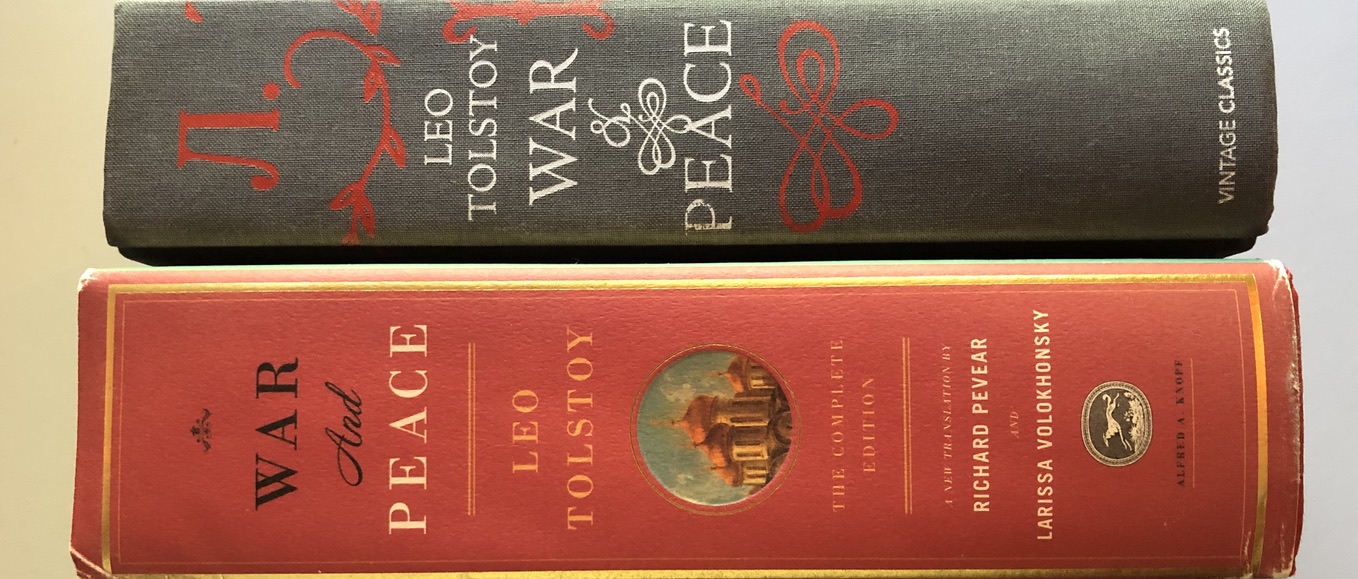Everyday War, Everyday Peace, Everyday And
From a notebook: On War and Peace, 2

Near the midpoint of War and Peace, Tolstoy offers a key to the book’s concerns: the significance of its “war” belongs not to campaigns against Napoleon nor to the battles of Austerlitz and Borodino, so vividly sketched in its chapters; neither does the meaning of its “peace” reside in the sumptuous balls or several romances so irresistibly depicted. One might say, rather, that Tolstoy’s real interest is in the “and”, the spaces between peak experiences—those zeniths we seldom recognize as such until we are far enough away from them to realize their eminence—that represent the moment-by-moment presence and portent of our loves, fears, uncertainties.
Sometimes Pierre remembered stories he had heard about how soldiers at war, taking cover under enemy fire, when there is nothing to do, try to find some occupation for themselves so as to endure the danger more easily. And to Pierre all people seemed to be such soldiers, saving themselves from life: some with ambition, some with cards, some with drafting laws, some with women, some with playthings, some with horses, some with politics, some with hunting, some with wine, some with affairs of state. “Nothing is either trivial or important, it’s all the same; only save yourself from it as best you can!” thought Pierre. “Only not to see it, that dreadful it.”
Reading this passage called to mind some thoughts on courage penned by the philosopher A. C. Grayling, which I was lucky enough to find just now in his book, Meditations for the Humanist:
Most people tend to think of courage as a warrior virtue, as belonging typically to battle; and therefore, by analogy, to endeavour on the upper slopes of Everest, in the deeps of the sea, and even on the sports field—in other words, wherever endurance, grit and determination in the face of physical challenges are required. That is true enough. But courage is often demonstrated, because it is often needed, in greater quantities in daily life; and there are even times when ‘merely to live’, as Seneca put it in a letter to Lucilius, “is itself an act of courage.”
Ordinary life evokes more extraordinary courage than combat or adventure because both the chances and the inevitabilities of life—grief, illness, disappointment, pain, struggle, poverty, loss, terror, heartache: all of them common features of the human condition, and all of them experienced by hundreds of thousands of people every day—demand kinds of endurance and bravery that make clambering up Everest seem an easier alternative. Whereas mountaineering and deep-sea diving are self-contained activities that last a certain length of time with—if all goes well—a return to a status quo ante when they are over, facing (say) grief or disappointment is quite different. They are open-ended, new, different dispensations with unforeseeables deeply embedded in them, promising only that much will have to be borne before relief comes. To lie sleepless with pain at night, or to wake every morning and feel the return of grief, yet to get up and carry on as best one can, is courage itself.
The bravery required to face “different dispensations with unforeseeables deeply embedded in them”: that’s as good a summation of what Tolstoy’s masterpiece is about as one is likely to find, for it captures the unfolding experiences of the characters—Natasha and Nikolai, Prince Andrei and Princess Marya, Sonya and Julie and Pierre and all the rest—in the everydayness that the author, through his art, has made so enduring.
“Courage,” Plato wrote (as Grayling shares in his epigraph to the essay I’ve quoted), “is a kind of salvation.” What it saves us not only from, but for, as Pierre will learn, is life.
